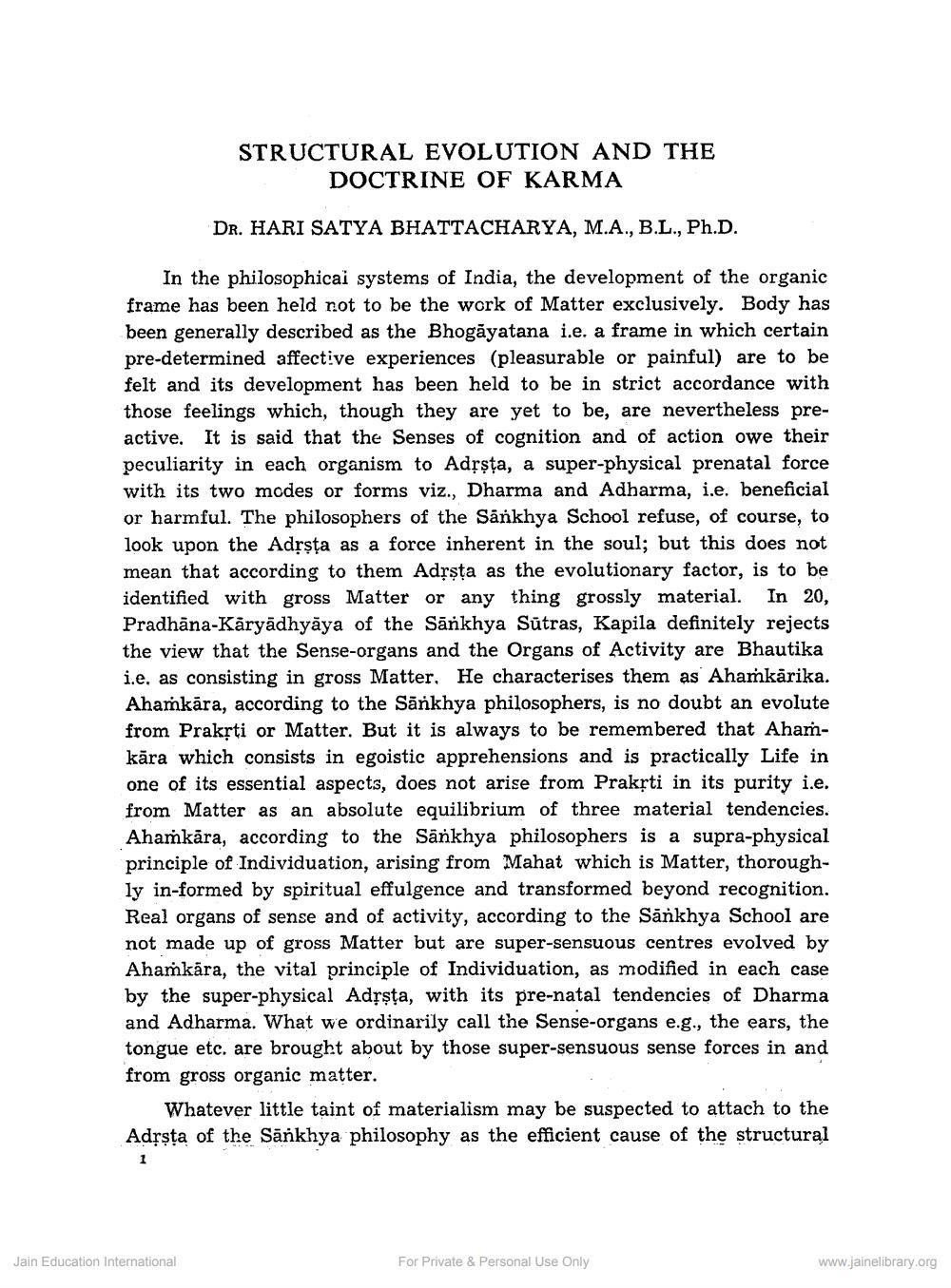Book Title: Structural Evolution and the Doctrine of Karma Author(s): Harisatya Bhattacharya Publisher: Z_Vijay_Vallabh_suri_Smarak_Granth_012060.pdf View full book textPage 1
________________ STRUCTURAL EVOLUTION AND THE DOCTRINE OF KARMA DR. HARI SATYA BHATTACHARYA, M.A., B.L., Ph.D. In the philosophical systems of India, the development of the organic frame has been held not to be the work of Matter exclusively. Body has been generally described as the Bhogayatana i.e. a frame in which certain pre-determined affective experiences (pleasurable or painful) are to be felt and its development has been held to be in strict accordance with those feelings which, though they are yet to be, are nevertheless preactive. It is said that the Senses of cognition and of action owe their peculiarity in each organism to Adṛṣṭa, a super-physical prenatal force with its two modes or forms viz., Dharma and Adharma, i.e. beneficial or harmful. The philosophers of the Sankhya School refuse, of course, to look upon the Adrsta as a force inherent in the soul; but this does not mean that according to them Adṛṣṭa as the evolutionary factor, is to be identified with gross Matter or any thing grossly material. In 20, Pradhana-Karyadhyaya of the Sankhya Sutras, Kapila definitely rejects the view that the Sense-organs and the Organs of Activity are Bhautika i.e. as consisting in gross Matter. He characterises them as Ahamkarika. Ahamkara, according to the Sänkhya philosophers, is no doubt an evolute from Prakrti or Matter. But it is always to be remembered that Ahamkära which consists in egoistic apprehensions and is practically Life in one of its essential aspects, does not arise from Prakṛti in its purity i.e. from Matter as an absolute equilibrium of three material tendencies. Ahamkara, according to the Sankhya philosophers is a supra-physical principle of Individuation, arising from Mahat which is Matter, thoroughly in-formed by spiritual effulgence and transformed beyond recognition. Real organs of sense and of activity, according to the Sankhya School are not made up of gross Matter but are super-sensuous centres evolved by Ahamkāra, the vital principle of Individuation, as modified in each case by the super-physical Adrsta, with its pre-natal tendencies of Dharma. and Adharma. What we ordinarily call the Sense-organs e.g., the ears, the tongue etc. are brought about by those super-sensuous sense forces in and from gross organic matter. Whatever little taint of materialism may be suspected to attach to the Adrsta of the Sänkhya philosophy as the efficient cause of the structural 1 Jain Education International For Private & Personal Use Only www.jainelibrary.orgPage Navigation
1 2 3 4 5 6
